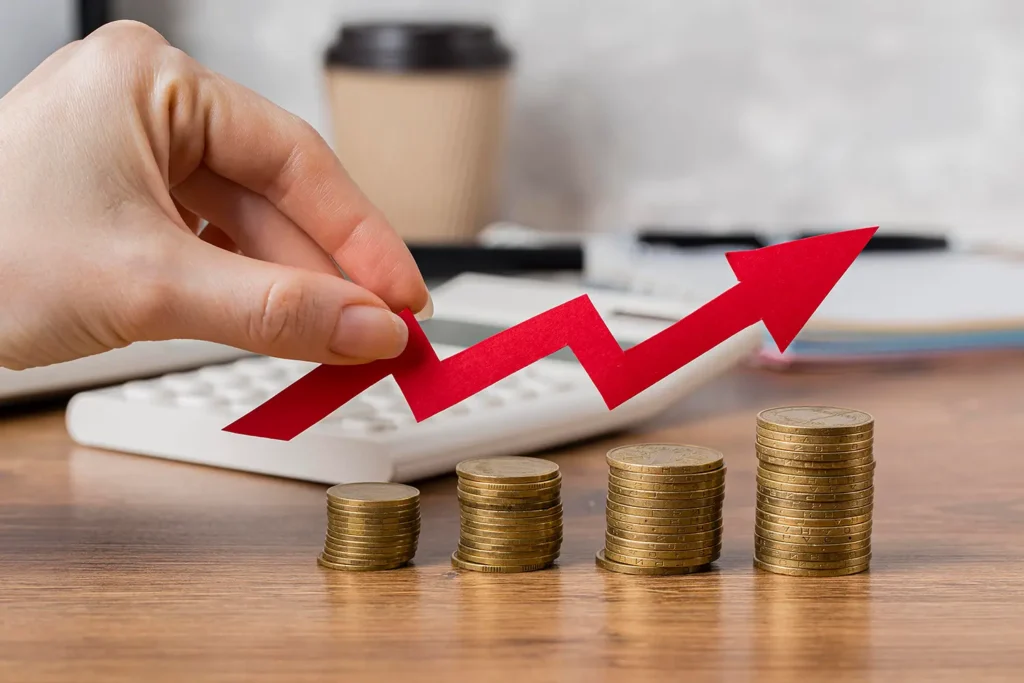Introduction
In fact, learning how to start investing with little money is one of the smartest financial decisions you can make.When people hear the word investing, they often imagine rich business moguls or Wall Street traders moving millions of dollars. But the truth is—you don’t need to be wealthy to invest.
Thanks to modern tools, apps, and financial education, you can begin your investment journey with just a few dollars. Whether you’re a student, a freelancer, or someone just starting out, this guide is designed for you.
Starting to invest doesn’t require a large amount of money; even small steps can make a big difference over time. With the right approach, you can begin building wealth by investing small amounts regularly in options like mutual funds, ETFs, or retirement accounts. Modern apps and platforms make it easier than ever to start with just a few dollars. The key is consistency, patience, and choosing investments that match your financial goals. Beginning early, even with little money, sets the foundation for long-term growth.
If you want to build wealth and secure your future, the best time to start investing is today.
Why You Should Start Even with a Small Amount
You may think, “What difference can $10 or $50 really make?” But here’s the truth:

The Power of Compound Interest
The power of compound interest lies in its ability to grow your money faster over time by earning interest on both your original savings and the interest already added. This “interest on interest” effect means even small investments can turn into large amounts if you stay consistent and give them enough time. The earlier you start, the greater the impact, because your money has more years to multiply. Compound interest is one of the strongest tools for building long-term wealth and achieving financial freedom.
Many people wait for the “right time,” but the earlier you start investing, the more benefits you gain from compound growth.
Even small amounts, when invested consistently over time, can grow significantly due to compound interest.
For example:
$50 per month invested at 10% annual return = $34,000+ in 20 years
Starting early gives your money time to grow. So the sooner you start—even with a little—the better.
Step-by-Step: How to Start Investing with Little Money
1.Set Your Financial Foundation
Setting your financial foundation means creating a strong base for managing money and achieving future goals. It starts with making a budget, tracking expenses, and building an emergency fund to handle unexpected costs. Paying off high-interest debt and developing good saving habits are also key steps. With a solid foundation in place, you can reduce financial stress, make smarter decisions, and prepare yourself for bigger opportunities like investing and long-term wealth building.
Even if you have only a small amount, you can start investing through low-cost options like mutual funds, ETFs, or retirement accounts.
Before you invest:
1.Build an emergency fund (3–6 months of expenses)
Pay off high-interest debt (like credit cards)
Know your goals (retirement, a car, a house, etc.)
This ensures your investments won’t be interrupted by sudden expenses.
2.Choose the Right Investment Platform
There are platforms that let you invest with as little as $1:
Robo-advisors (like Betterment, Wealthfront): Automatically invest your money in diversified portfolios.
Brokerage Apps (like Robinhood, Fidelity, or Webull): Allow you to buy stocks, ETFs, and more with zero commission.
Micro-investing Apps (like Acorns or Stash): Round up your daily purchases and invest the change.
Cryptocurrency apps (like Coinbase): Start buying small amounts of crypto.
When you start investing, you give your money the chance to grow faster and work for you instead of sitting idle.
Look for platforms with no account minimums and low fees.
3.Start with ETFs or Mutual Funds
ETFs (Exchange-Traded Funds) are great for beginners because:
They’re diversified (spread your risk)
You can buy small fractions (partial shares)
They usually have low fees
Mutual Funds are similar, but often require a higher minimum investment.
Tip: Search for “no-minimum index funds” for a cost-effective start.
4.Try Fractional Shares
You don’t need $3,000 to buy a share of Amazon. With fractional investing, you can buy a slice of expensive stocks.
For example:
$5 can get you a portion of Apple, Tesla, or Google stocks.
Apps like Fidelity, Robinhood, and Cash App Investing offer fractional shares.
5.Consider Real Estate with REITs
You don’t need to buy a house to invest in real estate.
REITs (Real Estate Investment Trusts) are companies that own income-producing properties. You can invest in them through:
ETFs
Mutual funds
Directly via apps like Fundrise
Minimum investment? Sometimes as low as $10.
6.Automate Your Investments
Consistency beats timing the market.
Set up auto-deposits into your investment account.
Even $5/week adds up over time.
This creates a habit, and you benefit from dollar-cost averaging—investing regularly regardless of market price.
No matter your age or income, it is never too late to start investing and take control of your financial future.

7.Educate Yourself
Learning how to start investing with little money is only the beginning. Keep growing your knowledge:
Read books like The Intelligent Investor or I Will Teach You to Be Rich
Follow YouTube channels focused on beginner investing
Join finance communities or forums
The more you learn, the smarter your investments become.
Mistakes to Avoid
Waiting for “the right time”
Starting now—even small—is better than waiting forever.
Chasing quick returns
Avoid “get rich quick” scams. Focus on long-term growth.
Ignoring fees
High fees can eat into small investments. Choose low-cost platforms.
Putting all your money in one place
Even with $20, diversify between ETFs, stocks, and perhaps REITs.
Not reviewing your portfolio
Check in at least once every 6 months and rebalance if needed.
Real-World Example
Sarah, a college student, started investing $20 per month at age 20 using a robo-advisor. She focused on ETFs with low risk and high diversification.
By age 30, even with small contributions, her portfolio grew to over $5,000, thanks to consistent deposits and compounding returns. Now, she’s confident about building a much stronger financial future.
Tools to Help You Start
Tool/App Purpose Starting Investment
Acorns Round-up investing $5
Robinhood Stocks & ETFs $1
Fidelity Fractional shares $1
Stash Guided investing $5
Coinbase Crypto investments $2
Fundrise Real estate investing $10
Conclusion
You don’t need thousands of dollars to become an investor. In fact, the best time to start is now, no matter how little you have.By understanding how to start investing with little money, you begin to take control of your financial future. With consistency, patience, and a smart plan, your small investments today can turn into financial freedom tomorrow.
Read More about personal finance.



